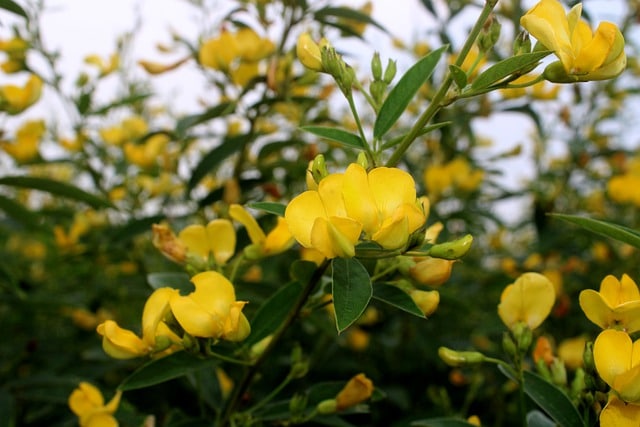Pigeon pea is one of the most heat and drought resistant legumes as its root oils deep and extensive.
India is the leading producers, accounting for about 90% of the total world population. It is an important legume of East Africa but not so important in West Africa.
It’s lack of acceptance is due to the hard seed coat of the mature seeds which make them slower to cook than many other grain legumes.
Origin
The pigeon pea is probably a native of Africa. It was cultivated in Egypt before 2000 B.C. It was taken to India in prehistoric times and this region now constitutes a center of diversity with the greatest number of cultivars. Pigeon peas are now widely spread throughout tropics and subtropics.
Ecology
Pigeon pea shows a wide adaptability to climate and soils. It is adapted to derived savanna and arid areas since it is deep-rooted and fairly drought resistant.
They are less suitable for the wet tropics and most cultivars are very sensitive to frost. They can be grown in almost all soil types provided they are not waterlogged.
Most cultivars, especially the tall late maturing ones are photoperiod sensitive, being short-day plants. This affects the time of maturity.
Botany
Pigeon pea is a short-lived perennial plant, often treated as an annual in cultivation but if allowed to remain in the soil, lives for 3-4 years. It grows up to 4m tall.
It produces a very pronounced deep taproot and many laterals and the roots carry nodules which vary in size.
The main stem is erect, fairly thick and produces many branches.
The leaves are alternate, trifoliate and are carried on short petioles.
The terminal leaflet has a short stalk whereas the lateral leaflets are practically sessile.
The terminal leaflet is considerably larger than the laterals. The leaves are hairy on both surfaces.
Inflorescences occur as terminal and axillary racemes with several flowers.
Flowering extends over several months. The flowers are yellow or purple and are carried on stiff peduncles.
The flowers are self and cross-pollinated. The fruits (pods) are straight, partially hairy structures with pronounced pointed beak and diagonal depressions between seeds.
They contain 2-8 seeds, which vary in size, shape and color, usually round or oval, reddish-brown, purple, brown, greenish or white.
Cultural practices
Planting should be done when rains are established in April/May.
Seedrate for the sole crop is 15-25kg/ha. It is down in rows spaced 90-120 cm and 30-45cm between plants.
When inter-cropped, the row spacing could be increased depending on type of companion crop.
Dwarf, short duration and high yielding cultivars are down closely, about 25-30cm between and within the row, in pure stand.
Weed control is necessary especially at the early stages of growth.
The crop could suppress weeds at later stages. Weeds can be controlled manually or with mechanical cultivators, 2-3 times during the growth of the crop.
Herbicide can also be used; e.g prometryne at 1kg a.I/ha applied pre-emergence.
Being a legume crop, it may not require a large amount of nitrogenous fertilizer, but it requires other nutrients, namely, phosphorus, potassium, calcium, magnesium, and sulphur.
There is however limited work on the fertilizer requirements of the crop. Generally, when grown as a sole crop, a dose of 20kgN, 50kgP2O5 and 30kgK2O per nectar may be given.
Harvesting
For early maturing cultivars, the flowering period starts at 3.5 months after planting, medium maturing cultivars at 4.5 months and late maturing cultivars at about 5.5 months.
The duration of flowering ranges from 2-3 months depending on the cultivars. So the crops takes 6-8 months to mature.
The pods are picked by hand at frequent intervals. When the crop is grown on an annual basis, that is, only for one year, the plants are cut at ground level, tied into bundles and sent for threshing after drying.
As a perennial, cropping can be continued for 3-4 years. Threshing is done manually by beating the pods with a stick or beating the plant against a hard surface or by machines.
Yield
The yield of dry seeds ranges from 500-1000kg/ha under local conditions.
Under improved management, 2000kg/ha can be obtained.
Storage
Properly dried grains store well and hence they should be dried to a low moisture content.
Containers and storage structures should be cleaned and fumigated.
Chemical composition
Dry ripe, pigeon peas contain about 10% water, 19.2% protein, 1.5% fat, 57.3% carbohydrate, 8.1% fibre and 3.8% ash.
Uses
1. For human consumption; the dry seeds are boiled. The seeds, which have hard coats, are slower to cook than many other grain legumes.
2. The dry husks and broken seeds are used as cattle feed in some places.
3. The tops of the plant with fruits provide excellent fodder and are also made into hay and silage.
They could be planted as a contour hedge in soil erosion control and are often grown as a cover crop in plantations.
Diseases
The most common disease is wilt caused by the fungus Fusarium udum.
The disease can be recognized by the blackened roots and stems, which can be seen after peeling off the bark.
Control measures consist of using wilt resistant cultivars and practicing crop rotation as the pathogen is soil borne.
Insect pests
The most serious pests are the pod caterpillar (Exelasta parasita), the pod fly (Muscidoe acalyotratoe), the leaf caterpillar (Eucelis crittica), the pod borer (Ancylostomia Stercorea) and Heliothis virescens, which feed on the developing seeds rendering them unfit for sale.








